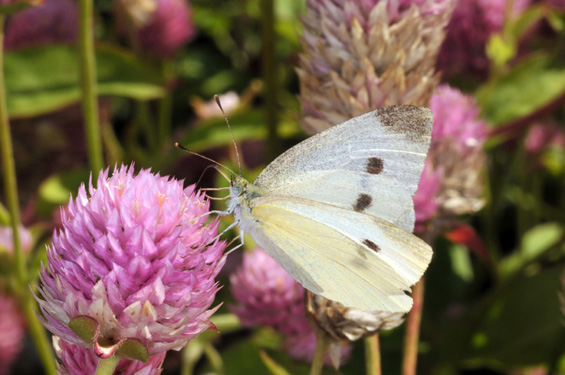
Common Name: Cabbage butterfly (imported cabbageworm)
Scientific Name: Pieridae: Pieris rapae
Status: pest of vegetable crops
Damaging Stage: caterpillar
Biology: The wings of cabbage butterflies are white-green with black tips. There are two submarginal black spots in females, and one in males. The butterflies overwinter as pupae and emerge in early spring. There is one generation per year.
Caterpillars are called cabbageworms. They are green with a yellow stripe down the middle of the back and are approximately 1� inches long. They have four pairs of prolegs in addition to three pairs of legs near the head.
Injury: Adults lay eggs on the undersides of leaves. Larvae tend to feed on the flesh of leaves in between the veins. They often hide next to or underneath the leaf veins. Eggs are laid on the plants of the mustard family (crucifers), particularly cabbage and broccoli plants. They also are attracted to dandelions and other flowers.
Action Threshold: Crops are considered to have moderate infestation if cabbageworms are recovered from 20-30 percent of the plants.
Management: Cabbage butterflies can be managed by both chemical and biological control options.
|